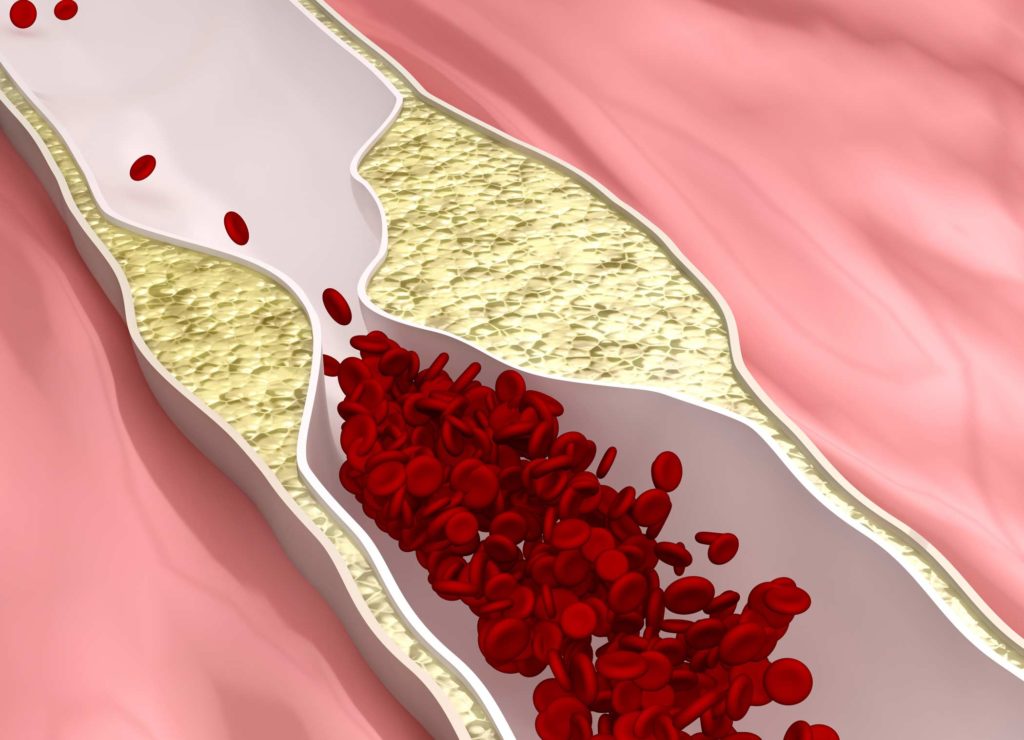
Medical professionals have known for years that the buildup of arterial plaque can wreak havoc on the heart and health of a patient. Plaque narrows the arteries and reduces the ability of blood to flow, which eventually leads to strain on the heart as it overworks to pump blood out to the body’s extremities. Plaque can even block the heart completely. Arterial plaque can cause high blood pressure, heart disease and heart attack. Heart attacks that occur as a result of atherosclerosis account for 30 percent of the total number of heart attacks in Americans each year, according to the Texas Heart Institute at Baylor St. Luke’s Medical Center in Houston, Texas.
While heart attacks that stem from clogged arteries make up a third of all heart attack cases, a specific type of plaque has also been found to be the source of a large percentage of the other two-thirds of heart attacks. This type of plaque is called vulnerable plaque, and it is a type of arterial plaque that made up of lipids, cholesterol, and white blood cells. Like other forms of plaque, vulnerable plaque is found in the walls of the arteries. What makes it different from other types of plaque is that it is covered with a very thin fibrous layer that makes it vulnerable to disruption or movement. Vulnerable plaque may even be more serious than types of arterial plaque, according to some researchers.
The thin, fibrous layer or cap that covers vulnerable plaque in the artery can be easily disrupted. One trigger that causes vulnerable plaque cap disruption is strenuous forms of exercise, particularly those high in intensity. Infrequent or irregular exercise can also strain the patient’s heart and disrupt the cap of vulnerable plaque.
While strenuous exercise can be one cause of cap disruption, researchers have found inflammation of the arteries is likely to be the biggest reason that the cap covering vulnerable plaque is disrupted. Vulnerable plaque is typically very soft in comparison to other types of arterial plaque, and when arteries become inflamed, the cap over the vulnerable plaque begins to crack or split, allowing the soft, fatty substance to leak out. Once the plaque has leaked out, it is picked up by the blood and is carried to other parts of the body where it can cause blockages that may lead to heart attack or ischemic stroke.
Like regular arterial plaque, vulnerable plaque can be prevented. Prevention steps include eating a healthy diet starting an exercise routine under the advisement of your physician. Patients with vulnerable plaque should also quit smoking, as smoking can cause inflammation.
Individuals with vulnerable plaque should look to lower their risk of cap disruption by discussing with their doctor ways to reduce or eliminate inflammation. Patients can be tested to check their C-reactive protein levels. C-reactive protein a protein found in the body, and is an indicator of inflammation and may indicate a future heart attack. If a patient has a high level of C-reactive protein, prophylactic steps can be taken to reduce inflammation in order to lower risk of a heart attack, such as establishing a daily aspirin regimen or using medications to lower C-reactive levels.
Any kind of arterial plaque buildup is a cause for concern, says Dr. Michael Budler, M.D. Budler, an interventional radiologist in Grand Island, Nebraska, treats patients that have an arterial plaque buildup, including the vulnerable plaque. Arterial plaque causes a range of health conditions, like heart disease and peripheral artery disease. Peripheral artery disease, or PAD, is a condition in which plaque builds up in the arteries located in the extremities, like the legs. The condition can cause numbness, pain, and even thinning of the skin. “Plaque buildup in the arteries has a significant impact on the rest of the body,” says Budler. “The biggest impact is the reduction of blood flow. This impacts everything – the heart, circulation and even the skin,” he explains.
Budler uses vascular stenting to treat patients with arterial plaque buildup. Vascular stenting involves the insertion of a wire mesh tube into the artery to compress plaque and holds the artery open. Another therapy offered by Budler is angioplasty, in which a small balloon is pushed into the artery to push back plaque buildup and increase blood flow. Both the vascular stenting and angioplasty procedures are safe, routine therapies that can yield great results for patients, and decrease their chance of heart attack,” says Budler.
